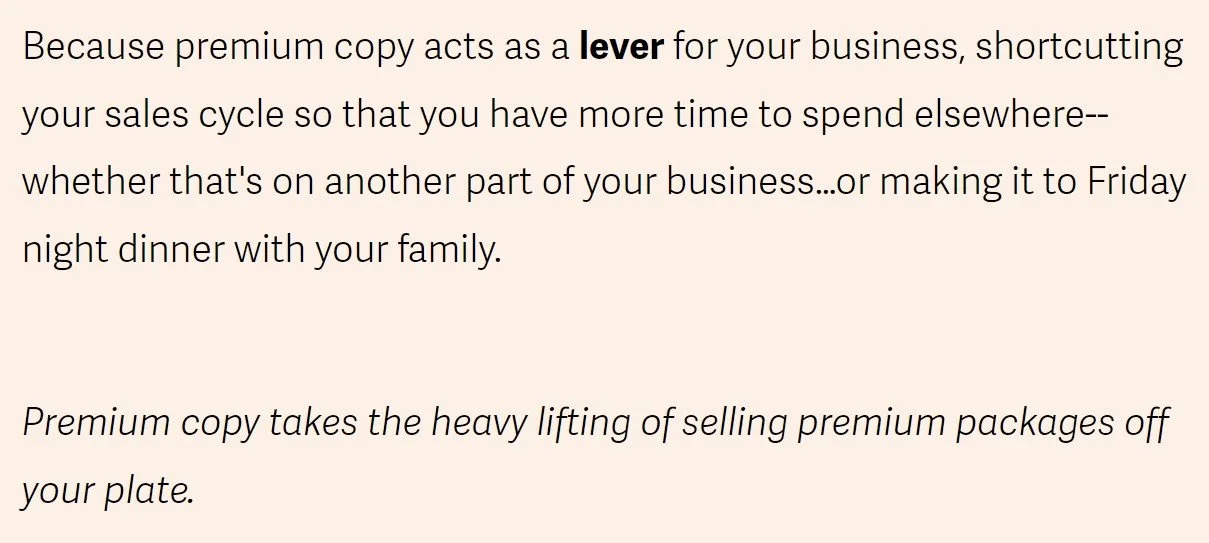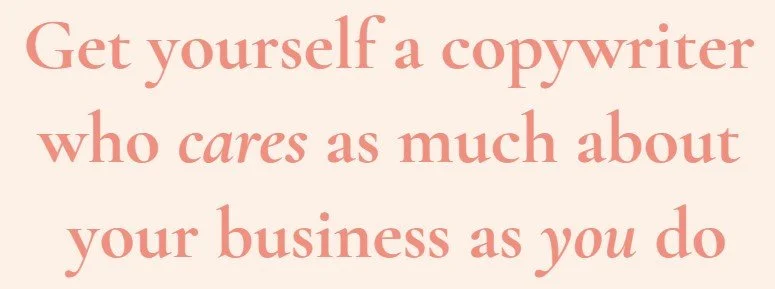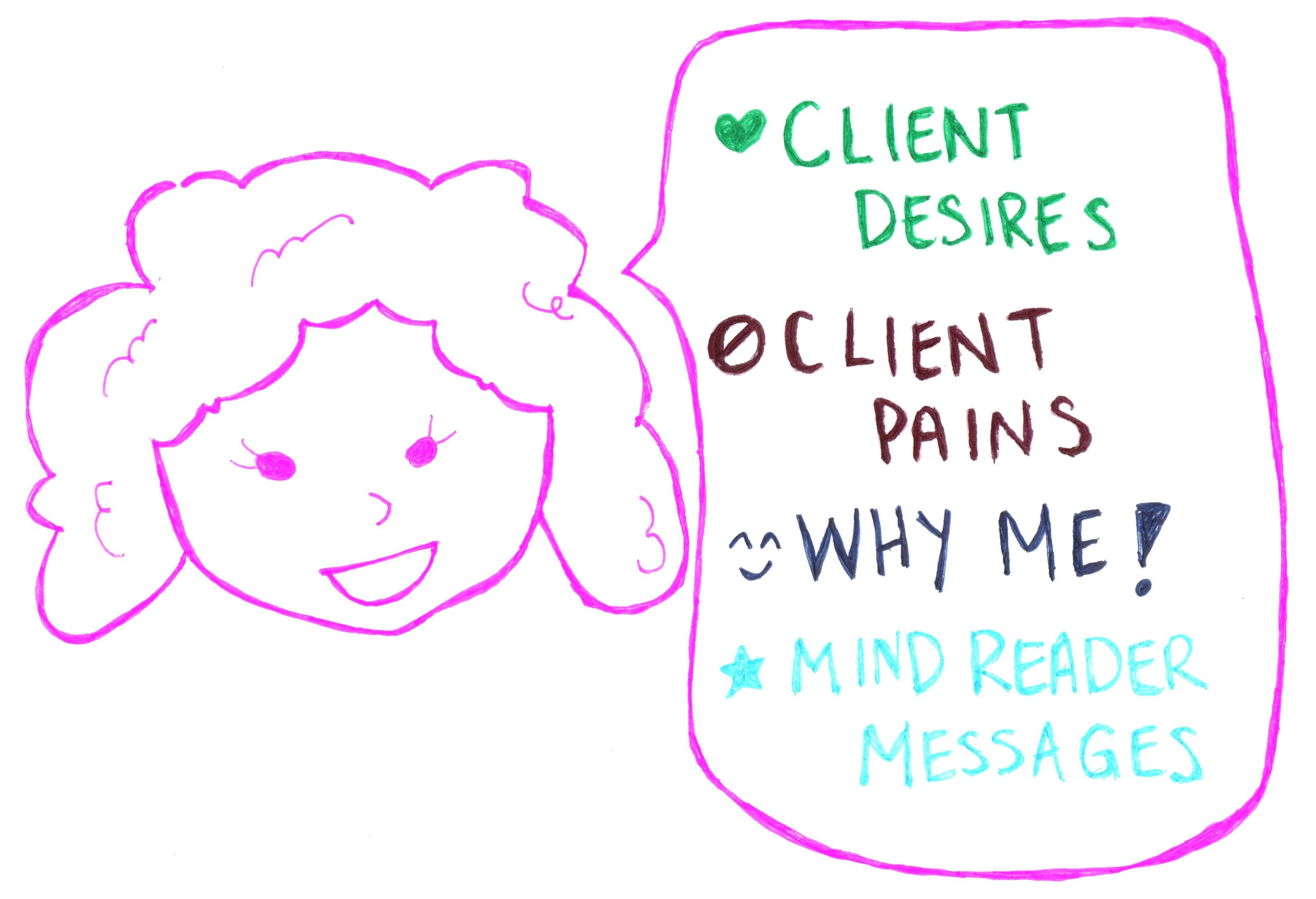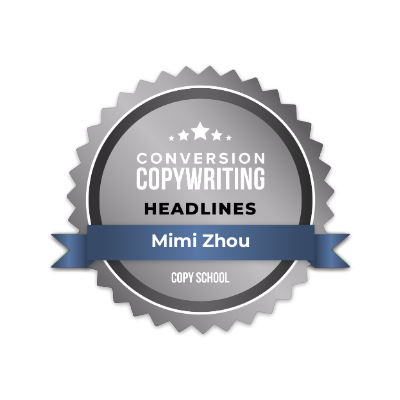Snooze-fest headlines don’t lead to sales. Here’s how I write memorable ones.
“On the average, five times as many people read the headline as read the body copy. When you have written your headline, you have spent eighty cents out of your dollar.”
—David Ogilvy (the "Father of advertising")
Given the stat above, if I were hiring a copywriter, I'd damn well make sure they could write a great headline. Here's how I do it.
Below, I'm sharing with you:
☑️ headline basics
☑️ my take on the specific role headlines play in your conversions
☑️ my own process for writing memorable headlines...
☑️ including a behind-the-scenes peek into my writing app!
First things first: “What are headlines and what are they supposed to do?”
I'm going to talk you through three different kinds of webpage headlines.
The most commonly understood kind is just called the headline--it's the first bit of copy you see when you land on a page and it's usually in H1 sized-font (it's also sometimes called the "H1").
If you look at my Homepage, my Homepage headline is:
Headlines sometimes have a bit of text that gives them more context right below them. These are called subheads. Going back to my own example, here's the subhead for my Homepage headline:
If you scroll down that page, you'll also see larger lines of text that introduce each section. These are called crossheads and are usually in H2 or H3 sized-fonts. Here are some crossheads from my homepage.
Crosshead example that introduces a testimonial:
Crosshead example that introduces my offers:
Crosshead example that introduces what you get when you work with me:
Now that we're on the same page about the different kinds of headlines there are, here's each one's job:
The job of your first headline (the H1 above-the-fold) is to get readers to continue reading down the page.
The job of your subheads is to give any context needed to a headline. Subheads can be found with the H1 or with crossheads down the page.
The job of your crossheads is--as with your H1--to get readers to read the section they introduce.
Together with your body copy, they lead the reader down the page to your conversion point.
“So—are my headlines directly linked to my conversions?”
Generally speaking, yes.
But.
All your copy has an effect on your conversions.
And honestly, in our obsession with the conversion rate, I think we overlook something about what headlines can specifically do to lead to sales.
Because I actually don't think main job of your headlines, subheads, and crossheads is to convert your reader. (It's one job that they fulfill, along with your body copy and the rest of your marketing--but don't confuse that with their main job.)
Nor do I think their main job is to make Google's algorithm happy. (Though again, that can be one job if you're writing headlines with SEO keywords.)
No, I think the main job your headlines, subheads, and crossheads' is to help your reader remember you.
For your uniqueness, the quality of your work, your specific approach, what you believe in, and your big "why"--among other factors.
When a headline does its job
Because, guess what?
Most people who visit your website aren't going to be ready to buy from you the first time they land there. Or maybe even the second or third time. (Nor will they be ready to sign up for your email list or follow you on social.) In fact, across all industries, a good website conversion rate falls between 2-5%. That means 95-98% of people don't convert. (Source)
But at some point, they might be in the perfect place to buy--or they might bump into someone in that spot.
And you sure want to be remembered when that happens.
(Another way of thinking about this is that if no one remembers you...they aren't gonna buy from you.)
A note about my own headline examples, which you see above, along with the title of this blog post--you might say, "Mimi, you talk about conversions a lot in them!" And you'd be right. I do talk about conversions a lot because through research on my audience, I know that's what's desired. (Who doesn't like more sales?!)
But what I hope I've done in my headlines is to talk about conversions in a memorable way precisely because I know most people won't buy the first time they visit my site.
So again--my goal for my headlines isn't to put all the work of those conversions on them but for them to stick around in my readers' minds for that moment when they are ready to buy.
“This sounds great, but Mimi—how do I achieve that?”
Good question.
Here's Part 1 of my answer:
Before I write a word of copy--including headline copy--I put together a messaging document. This document has info about my ideal client, their pains, their desires, what I offer that's unique (including my value prop), and the messaging hierarchy (or the order the ideal reader needs to hear the messages in). My own messaging doc is how I know my ideal audience desires sales.
A Messaging Playbook is one of my offers btw--for more info on each category, see here and scroll down to the "Here's how" section.
Whether I'm crafting copy for myself or for a client, I refer to my messaging doc at all times. I'm referring to mine right now in writing this blog post. It's literally open in the tab next to the one I'm writing in so that I keep the reader top-of-mind.
The info you can find in my own messaging doc and my Messaging Playbook
A well-done messaging doc is based on research--that's the only way you know that what you're sharing is something your audience desires. Having your messaging in place makes everything else easier, like having a roadmap for everything you need to say in your copy.
The other thing to realize before you start writing headlines is the most common mistake people make when they write headlines--so you can avoid it.
You see, most people work one headline to death, tweaking incessantly in hopes that they'll somehow wrangle it into the one, perfect, magical headline to rule them all.
My friend--it does not work like that.
When I write headlines, I write about 100 for one webpage.
Yes. 100.
My first goal is simply to keep knocking 'em out and fill the page.
And yes, I write many bad headlines. But by pushing and stretching myself until I get to 100, I also come out with some pretty creative headlines--these are the ones I keep.
(I'd also like to point out that even if you just try to write 10 headlines, you're bound to avoid a mistake like putting "About me" in the H1 of your About page. Because I will not remember that after I've left the page. And if that's all people are reading when they land there...yikes.)
All of this brings me to Part 2 of my answer:
What really helped me level up my headline writing game was Copyhackers' Master of Headlines course (taught by Copyhackers founder Jo Wiebe). I was good at writing headlines before but this made me even better.
Because it's an implementation-style course (you implement the videos as you watch them), I've gone through it at least 3 times. Whenever I need to, I play a video as I write headlines. It's like having Jo writing there along with you.
And as she says in the course, each time I go through it, it builds muscle memory...I internalize it a little more so that I know in my body how to write headlines. It becomes less of a thinking thing--though of course I still think--and more of an embodied knowledge.
Proof of how thoroughly I've been through Master of Headlines--
they gave me a badge! 🎖️
While there are headline formulas included in the course, the real gold lies in its less formulaic parts.
Remember what I said above about filling the page with 100 headlines? Master of Headlines helps me fill the page, just in a more organized way. It comes with a template of what's called "Get going groups" to help write headlines. Some of the "Get going groups" are what you'd imagine--they speak to the audiences' pain, desires, and your value prop. (Notice anything in common with my messaging doc described above?)
Some of the "Get going groups" are ones you wouldn't necessarily think of--ones that prompt me to think of the story behind a brand, whether it's about a strong brand feature or a result the brand's achieved for a customer.
For most of the "Get going groups", I push myself to write 8-10 headlines. For some, I've been able to do more, faster, over time so that I'm now at 10-12 per group. The idea behind writing so many is that in stretching yourself, you write more creative headlines--and that's sometimes where you'll write something unique and therefore memorable.
To illustrate what I mean, I've made you a 9-minute video that shows you how I wrote 84 headlines for my homepage, how I narrowed them down, and how I've used the most memorable ones to communicate my message on my homepage.
This whole process, from the moment I start my first "Get going group" to the moment I have my pruned document of headlines takes me about 4-6 hours.
I go through this process for every webpage in my larger web copy packages, and a shorter version of the same process for my Copy Polish (that's the easiest way to have me work on your headlines, btw--check it out here).
Final thoughts: Get yourself a copywriter who can write creative headlines that linger long after your readers have left the page
Nobody says this, but I think headlines are part of the long-term game in business.
Because they probably won't get you immediate sales.
But they take up such valuable real estate on the page that you want to make sure they're memorable--that, like a catchy song, they linger in your readers' minds long after they've left the page.
Ultimately, that's what a good conversion copywriter does: they plant the seeds of what your services can do for your audience in their minds so that you can give them water and sunshine until folks are ready to work with you. 🌱









